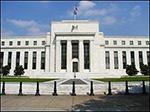Courtesy of Pam Martens
At Fed Chairman Jerome Powell’s press conference on July 29, he persisted in his explanation that all of the Fed’s bailout programs are really about helping the American people get back on their feet. Here’s one more, among a growing mountain, of reasons to question that.
Sri Lanka is an island country situated in the Indian Ocean and located about 9,000 miles from the United States. Its population of approximately 21 million ranks it the size of the state of Florida. Despite those statistics, Sri Lanka somehow became the main participant in an emergency lending facility set up by the Fed.
According to an official statement by the Central Bank of Sri Lanka (CBSL), “the CBSL has decided to pledge a sum of USD 1 billion worth of US Treasury Bonds held in the CBSL reserve and enter into the above type of Repo facility with the FED. This would permit the CBSL to raise USD 1 billion in cash form when required. When this Repo facility is settled by the CBSL, there will be no change in the CBSL Reserve position as the FED would release the pledged bonds back to the CBSL. The cost to the CBSL would be the applicable Repo fee, which is about 0.35 per cent per annum.”
The Fed’s foreign repo loan program is called the Facility for Foreign and International Monetary Authorities or FIMA. It was announced on March 31, 2020 by the Fed and extended on July 29 by the Fed to last until at least March 31, 2021. The program, according to the Fed, had the goal of allowing foreign monetary authorities to “temporarily exchange their U.S. Treasury securities held with the Federal Reserve for U.S. dollars, which can then be made available to institutions in their jurisdictions.”
More importantly, the Fed noted that the FIMA program would help the “U.S. Treasury market by providing an alternative temporary source of U.S. dollars other than sales of [Treasury] securities in the open market.”
…




